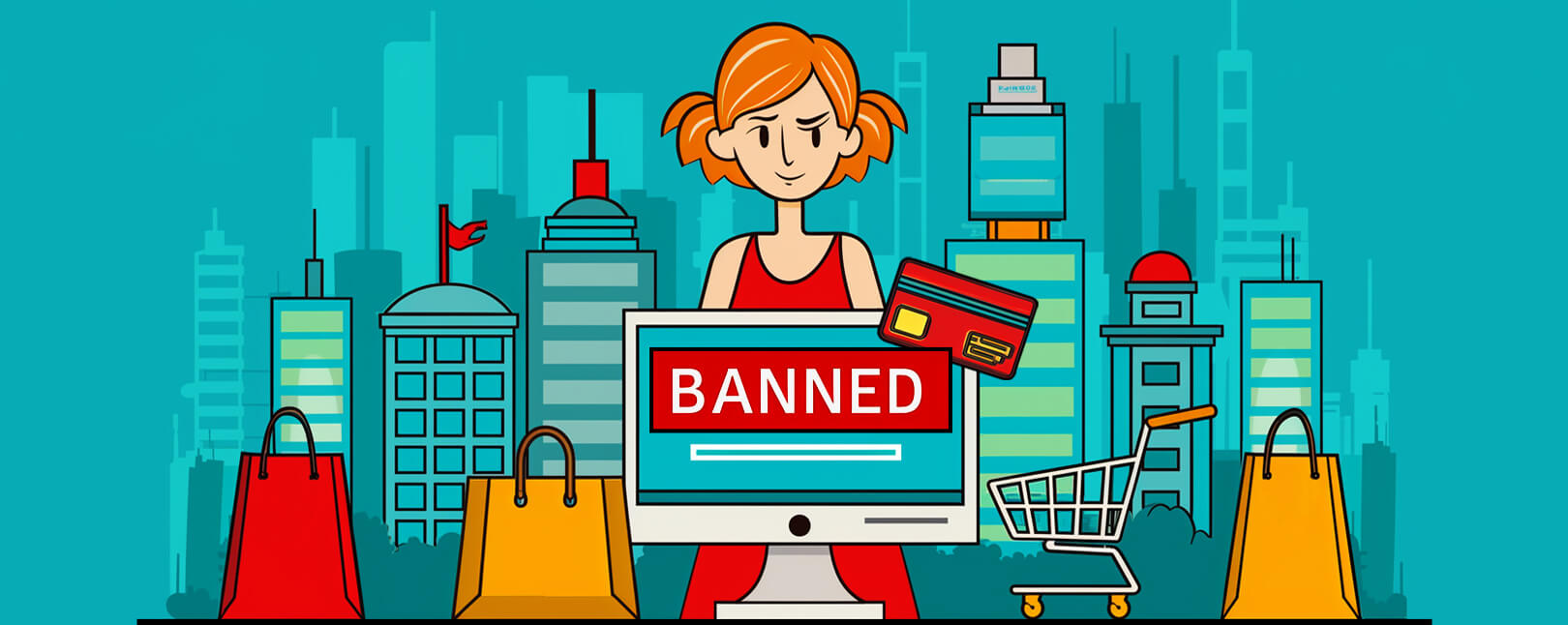What’s an “Acceptable” Chargeback Rate? Why Does Your Chargeback Rate Matter?
A high chargeback rate has the potential to upset your cash flow and limit your options for accepting payments. There are a lot of questions circulating around this topic, though. For instance, what exactly constitutes a “high” rate?
How do you calculate your chargeback rate? What’s considered “normal” for monthly chargeback issuances? And, if everyone’s rate is calculated differently, can a “normal” rate even really exist?
There’s a lot to unpack here. So, let’s start off with the basics.
Recommended reading
- The Best Chargeback Management Software for 2024
- Chargeback Ratio: 8 Important Things to Know in 2024
- Prevent Double Refund Chargebacks & Unnecessary Losses
- How to Find the Right Chargeback Management System
- Do Chargeback Bans Actually Help Stop Disputes?
- What is a Chargeback Analyst? Do You Need to Hire One?
What is a Chargeback Rate?
- Chargeback Rate
A chargeback rate is a metric that shows the ratio between the total number of transactions a merchant processes and the total number of chargebacks the merchant receives.
[noun]/charj • bak • rāt/A chargeback rate is sometimes referred to as a “chargeback ratio” or “chargeback-to-transaction ratio.”
In simple terms, this figure measures the number of incoming chargebacks you receive each month, relative to all the transactions you processed during that period. It’s a rough figure, but it helps give a general impression of your situation regarding chargeback issuances.
Banks and card networks use merchant chargeback rates as a key indicator. It helps them determine which merchants are “safe,” and which merchants might represent a liability.
Chargeback rate is not a great indicator, all things considered. There are a lot of extenuating circumstances that need to be factored in, like the number of transactions processed each month, product vertical, etc. We’ll discuss these later on, though. For now, let’s talk about how to calculate your current figure.
How to Calculate Your Chargeback Rate
We’ll start with an equation that’s about as close to standard as we can get. It’s not exact, but your chargeback rate is generally calculated using the following equation:
This seems simple enough. But, as mentioned above, other factors come into play. The biggest differentiator in calculating your chargeback rate is the card brand itself.
Both Mastercard and Visa use the equation shown above (total monthly chargebacks divided by total monthly transactions). There’s a catch, though; Visa divides your monthly chargebacks by the number of transactions processed during the same month, while Mastercard divides by the number of transactions processed in the previous month.
This chart helps illustrate the difference:
You’ll have a different rate for each card network because each brand only counts the transactions conducted on its own network. In other words, Visa only counts transactions and chargebacks that involve Visa cards. It’s possible to be compliant with chargeback rate limits on one network, and be in violation on another.
Why Does My Chargeback Rate Matter?
In short: your chargeback rate could mean the difference between business as usual and losing your bank account and your right to process payment cards.
If your chargeback-to-transaction rate sits above the point marked as “acceptable” by card networks like Visa or Mastercard, you’ll be labeled a “high-risk merchant” and required to join an excessive chargeback program. You’ll get hit with more fees; for instance, merchants in the Visa Dispute Monitoring Program must pay a $50 fee for each new Visa dispute filed. There are also regular account reviews, which can cost tens of thousands of dollars each.
Mastercard’s 2-tiered Excessive Chargeback Program requires each acquiring bank to submit a monthly report that outlines the activity of a listed merchant. The network charges between US $50 and $300 for each report the bank is required to send. The cost of not filing the reports is even worse, with penalties running as high as US $1,000 per day, per report.
An excessive chargeback rate may prompt the acquirer to place a hold on your merchant’s funds. This is called a merchant account reserve, and it can severely restrict the business’s access to needed operating capital. If the situation persists without any sign of improvement, though, the bank may simply cut their losses and terminate your account.
Only “first” chargebacks count against your chargeback rate. So-called “second chargebacks” (referred to as “arbitration chargebacks” by Mastercard and “dispute response reversals” by Visa) won’t impact your numbers.
If your account gets terminated, you would be unable to process credit card transactions altogether. You’d be added to the MATCH List. This would make you ineligible for a standard bank account with any other provider.
To stay in business, you’d be limited to working with a high-risk merchant processor. These specialists charge higher fees upfront, but they won’t penalize you for processing a higher number of transactions every month, and “acceptable” chargeback rates will become less urgent.
What’s an “Acceptable” Chargeback Rate?
Many merchants believe that a 1% chargeback rate is the standard threshold. This is an outdated rule of thumb, though.
Visa and Mastercard each set their own acceptable chargeback thresholds, and there are multiple different figures to reference. Back in 2019, for instance, Visa set their standard threshold at 0.9% of monthly transactions, as calculated using the formula outlined above. Their “Early Warning” threshold sits at 0.65% of monthly transactions.
For Mastercard, their “Chargeback Monitored Merchant” status has a threshold of 100 chargebacks per month and a ratio of at least 1%. For their “Excessive Chargeback Merchant” designation, the standard is at least 100 chargebacks per month and a ratio of at least 1.5% for two consecutive months.
Learn more about chargeback rate limitsAcquirers are ultimately liable for every merchant with whom they do business. So, if the dollar value of your outstanding chargeback liabilities exceeds the amount available in your account, the acquirer would have to cover the shortfall.
If you’re experiencing a surge in your chargeback rate, your acquirer may temporarily freeze your account. This isn’t a personal attack; it’s done as a way to help banks manage their own risk exposure.
Of course, as we’ll see in the next section, some business models and product verticals will unavoidably carry greater risk, and see higher average chargeback rates.
Average Chargeback Rates By Industry
The industry your business operates within can have a major impact on your chargeback rate. The same goes for the amount of transactions you process each month.
With regard to both points, some industries are generally at higher risk for fraud and chargebacks:
It’s important to note that these figures were compiled before the Covid–19 outbreak. It’s likely that the average chargeback rate in all of the verticals outlined above is higher than before.
Other Factors Influencing Your Chargeback Rate
As we’ve noted, card network rules can impact what’s considered “acceptable,” as can your acquirer. There are also other variables to consider, though.
The number of transactions you process each month can impact your chargeback rate. The same goes for the average dollar value of your transactions; for example, a small business with a small number of sales each month may get a bit more leeway than a large operation in a high-risk vertical. However, this can actually work against you when calculating your dispute rate.
You may have less flexibility if you already have a history of receiving chargebacks. However, your acquirer may be more inclined to cut you some slack if you have a better record of avoiding chargebacks.
Also, only “first” chargebacks count against your chargeback rate. So-called “second chargebacks” (referred to as “arbitration chargebacks” by Mastercard and “dispute response reversals” by Visa) won’t impact your chargeback numbers.
How to Keep Your Chargeback Rate Low
Of course, it’s important to remember that many chargebacks are cases of first-party fraud. These are invalid chargeback scams, and you have the right to challenge them through the representment process.
If you challenge a customer dispute and win, you can recapture all (or a portion) of the amount disputed. Unfortunately, this is a time-consuming and expensive process for everyone involved. Also, it will not undo the damage regarding your chargeback rate.
Chargeback rates are calculated using the total number of chargebacks issued. This is true regardless of whether they get reversed later.
It’s crucial that you do everything in your power to prevent chargebacks before they happen. To keep a lower chargeback rate, you must implement a comprehensive prevention strategy that addresses the top three chargeback sources: merchant error, third-party fraud, and first-party fraud. Among other things, you should:
Worried about your chargeback rate? We’re here to help. Chargebacks911® specializes in assisting merchants who are in danger of losing their credit card processing ability due to excessive chargebacks.
FAQs
What is a chargeback rate?
A chargeback rate is a metric that shows the ratio between the total number of transactions a merchant processes and the total number of chargebacks the merchant receives.
What is a normal chargeback rate?
Generally speaking, a rate above 1% is deemed unacceptable. The exact allowable rate, however, often varies depending on factors in including the card brand, business vertical, and chargeback history.
How is my chargeback rate calculated?
The number of chargebacks in a month is divided by either the number of transactions processed during that same month (Visa) or by the number of transactions in the previous month (Mastercard).
What variables can impact my allowable chargeback rate?
Your allowable chargeback rate can be influenced by any number of factors, including your business type, your chargeback history, the card brand, the acquirer, and more.














